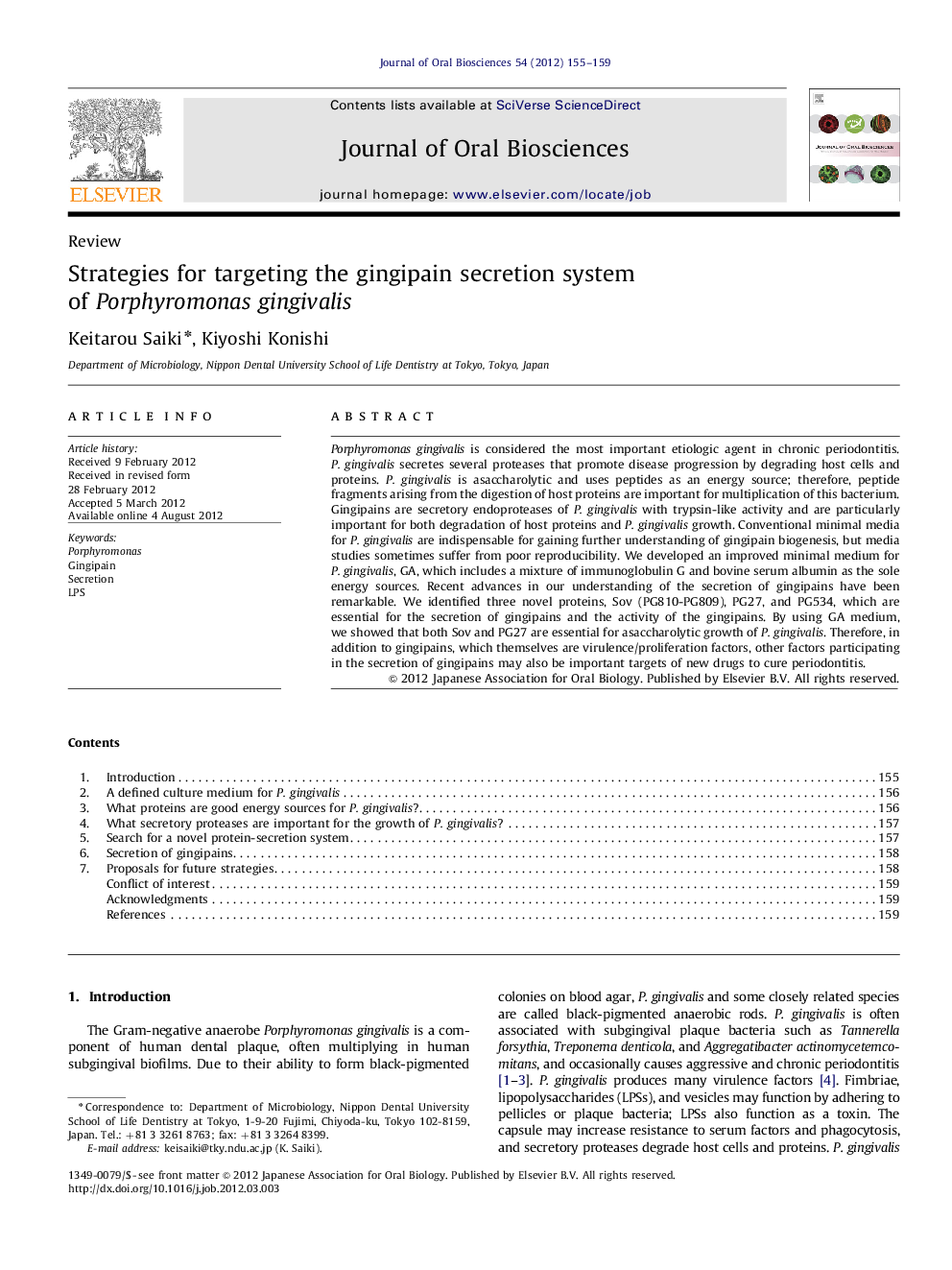| Article ID | Journal | Published Year | Pages | File Type |
|---|---|---|---|---|
| 10163706 | Journal of Oral Biosciences | 2012 | 5 Pages |
Abstract
Porphyromonas gingivalis is considered the most important etiologic agent in chronic periodontitis. P. gingivalis secretes several proteases that promote disease progression by degrading host cells and proteins. P. gingivalis is asaccharolytic and uses peptides as an energy source; therefore, peptide fragments arising from the digestion of host proteins are important for multiplication of this bacterium. Gingipains are secretory endoproteases of P. gingivalis with trypsin-like activity and are particularly important for both degradation of host proteins and P. gingivalis growth. Conventional minimal media for P. gingivalis are indispensable for gaining further understanding of gingipain biogenesis, but media studies sometimes suffer from poor reproducibility. We developed an improved minimal medium for P. gingivalis, GA, which includes a mixture of immunoglobulin G and bovine serum albumin as the sole energy sources. Recent advances in our understanding of the secretion of gingipains have been remarkable. We identified three novel proteins, Sov (PG810-PG809), PG27, and PG534, which are essential for the secretion of gingipains and the activity of the gingipains. By using GA medium, we showed that both Sov and PG27 are essential for asaccharolytic growth of P. gingivalis. Therefore, in addition to gingipains, which themselves are virulence/proliferation factors, other factors participating in the secretion of gingipains may also be important targets of new drugs to cure periodontitis.
Keywords
Related Topics
Life Sciences
Biochemistry, Genetics and Molecular Biology
Clinical Biochemistry
Authors
Keitarou Saiki, Kiyoshi Konishi,
